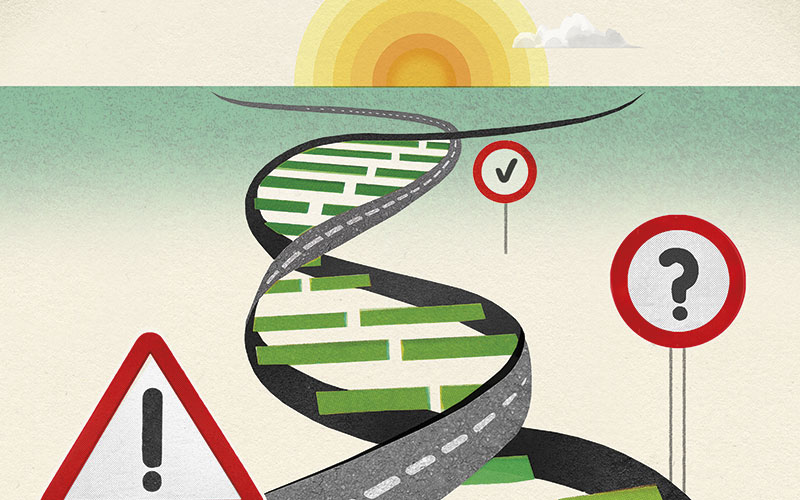This month we ask “What does 2022 hold in store for biomedical science?”


Pathology Service Manager - Microbiology
Leeds Teaching Hospitals NHS Trust
Whilst I don’t profess to have a crystal ball, neither do I express any certainties over the next 12 months, but I am confident that our profession is going to see even more change and evolution.
It is clear that COVID-19 will become more entrenched in our daily work streams as we start to incorporate what is still an “appendage section” in most labs. We will start to see more integration into routine service and further expansion of our point-of-care portfolios. Who would have predicted two years ago that PCR tests would be miniaturised so quickly and made readily available for health professionals to use outside of the lab.
Biomedical scientists have been thrust into frontline medicine to deal with the on-going pandemic and I doubt there is any hospital executive team in the UK that has not now realised the critical role biomedical science plays in patient care. This can only be a good thing for investment and support in our services next year and beyond.
One good thing to come from COVID-19 is the realisation within our own profession that a biomedical scientist is a very adaptable laboratory asset and can be utilised in all sections of pathology in a crisis. For years I have queried why we restrict ourselves to our own specialised disciplines when our training enables us to have many transferable skills beyond our own departments. I’m sure in 2022 we will start to see pathology laboratories start to break down these barriers and have a more flexible and dynamic workforce.

ValuMetrix Global Senior Director
Ortho Care
Next year and beyond will be focused on sustainability and the Clin Lab 2.0 movement.
I listened to “The Carbon Impact of Biotech and Pharma: A Roadmap to 1.5°C” at the COP26 summit and heard that labs are resource intensive – they use 10 times more energy and four times more water than office space and globally generate 12 billion pounds of plastic waste annually.
In the UK, health service procurement is asking for net zero suppliers and the UK Sustainable Healthcare Coalition is verifying targets for net zero. I believe that laboratory scientists will need to become leaders in sustainability; selecting vendors that incorporate environmentally responsible practices.
Clin Lab 2.0 held its first public colloquium in November. Its ethos is that as healthcare changes, the laboratory must change with it. The traditional, transactional lab model remains, but 2.0 uses data to produce actionable, clinical insight and aligns the role of the lab to the future of value-based healthcare. Labs must extend the value of their data to beyond the release of the test result. The lab industry must think of disruption through business model changes. One way is to think of laboratories as information hubs vs. clinical hubs and the data generated in the laboratory must be integrated, actionable, and easy to interpret to be valuable. I think these areas will become increasingly important for biomedical science in 2022.

Change Realisation Lead
North West London Pathology
With the 2021 United Nations Climate Change Conference coming to an end in Glasgow, my mind has been focused on what pathology can do to reduce our carbon footprint in 2022.
In October 2020, the NHS published the “Greener NHS national programme”, which defines a strategy to reduce NHS net carbon emissions to zero by 2040.
It is estimated that the NHS as a whole accounts for 5% of the total carbon emissions in the UK, but with limited financial resource at our disposal, what can pathology do to help reduce this burden?
Implementing carbon efficiencies does not have to be costly. Often adopting simple campaigns, such as switching off unnecessary lights and laboratory equipment at night, can be of great benefit and can also result in a cost saving.
Over the coming months we will be looking at all aspects of pathology and examining where we can implement the principle for sustainability: avoid, reduce, reuse and recycle.
As a large consumer of single-use plastic, we will be asking our suppliers what they can do in order to support a greener NHS.
We will be in conversation with our logistics team, looking at transport and courier routes for efficiencies, and we will be looking at ways to further digitise pathology in the coming year.
Image credit | Ikon
